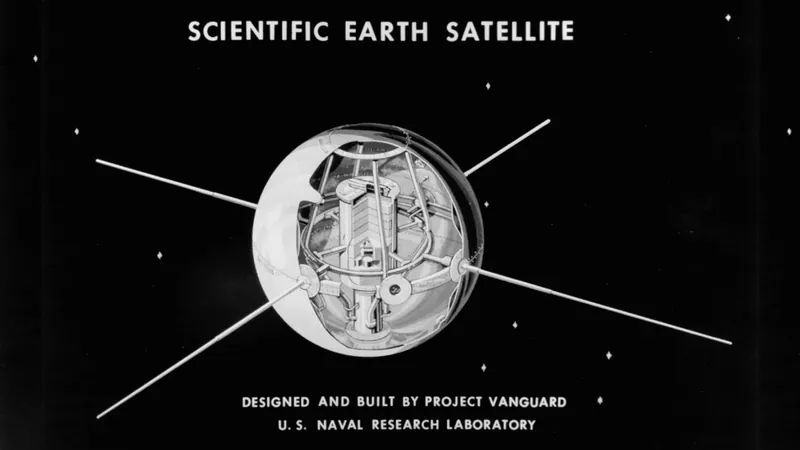
The Future of Space Exploration? Scientists Eye the Retrieval of Vanguard 1, the Oldest Satellite in Orbit
2025-04-04
Author: Daniel
A Legacy of Firsts
Vanguard 1 was not just one of the early satellites; it was a pioneer in solar technology, becoming the first satellite to generate power using solar cells. Today, it remains in an elliptical orbit, swinging from approximately 410 miles (660 kilometers) at its closest approach (perigee) to about 2,375 miles (3,822 kilometers) at its farthest point (apogee) from Earth.
Despite the satellite going silent in 1964 when its solar cells could no longer power its transmitter, the data collected about its orbit has contributed immensely to our understanding of the Earth’s shape and physical properties. This historical artifact symbolizes the era of the Space Age, making its potential recovery a subject of great interest and debate.
A Proposal for Retrieval
In a groundbreaking proposal presented at a recent science and technology conference by a team that includes aerospace engineers, historians, and writers, the possibility of retrieving Vanguard 1 has been put on the table. The group, which operates under the auspices of Booz Allen Hamilton, emphasized the importance of this mission not just for historical preservation, but for advancing current aerospace engineering practices.
“We're not the first to have this idea, and we certainly hope we won't be the last,” said Matt Bille, a key researcher on the project. The team believes that a closer look at Vanguard 1 could yield invaluable insights, particularly regarding the satellite's condition, the integrity of its solar cells, and the materials used in its construction after decades of exposure to the space environment.
A Unique Scientific Opportunity
Should the retrieval mission proceed, it would occur in two phases: first, the imaging of Vanguard 1 to assess its state, followed by the actual recovery. This initiative presents not only a technological challenge but also an extraordinary learning opportunity. The interaction with a spacecraft that survived nearly seven decades in space could unveil data relating to material degradation, radiation exposure, and the impact of micrometeorites on satellite tech.
Bille noted that a partnership with a private entity or philanthropist interested in space history could secure the funding necessary for the satellite’s retrieval. High-profile figures like Jared Isaacman, who has pioneered civilian space travel, and Jeff Bezos, who has a history of funding aerospace recovery missions, could potentially get involved.
Final Thoughts: A Time Capsule of Space History
The implications of this mission extend far beyond merely recovering a satellite; they touch on the future landscape of space exploration and preservation of our celestial artifacts. Vanguard 1 is a time capsule from the dawn of the Space Age, and restoring it to Earth could set a precedent in how we handle our discarded technology surrounding our planet.
As our understanding of space continues to grow, retrieving Vanguard 1 could serve as a mission of recovery, a learning experience, and a testament to human curiosity and ingenuity in pushing the boundaries of exploration. The question remains: will the aerospace community rally together to bring this legendary piece of history back home? Only time will tell.

 Brasil (PT)
Brasil (PT)
 Canada (EN)
Canada (EN)
 Chile (ES)
Chile (ES)
 Česko (CS)
Česko (CS)
 대한민국 (KO)
대한민국 (KO)
 España (ES)
España (ES)
 France (FR)
France (FR)
 Hong Kong (EN)
Hong Kong (EN)
 Italia (IT)
Italia (IT)
 日本 (JA)
日本 (JA)
 Magyarország (HU)
Magyarország (HU)
 Norge (NO)
Norge (NO)
 Polska (PL)
Polska (PL)
 Schweiz (DE)
Schweiz (DE)
 Singapore (EN)
Singapore (EN)
 Sverige (SV)
Sverige (SV)
 Suomi (FI)
Suomi (FI)
 Türkiye (TR)
Türkiye (TR)
 الإمارات العربية المتحدة (AR)
الإمارات العربية المتحدة (AR)